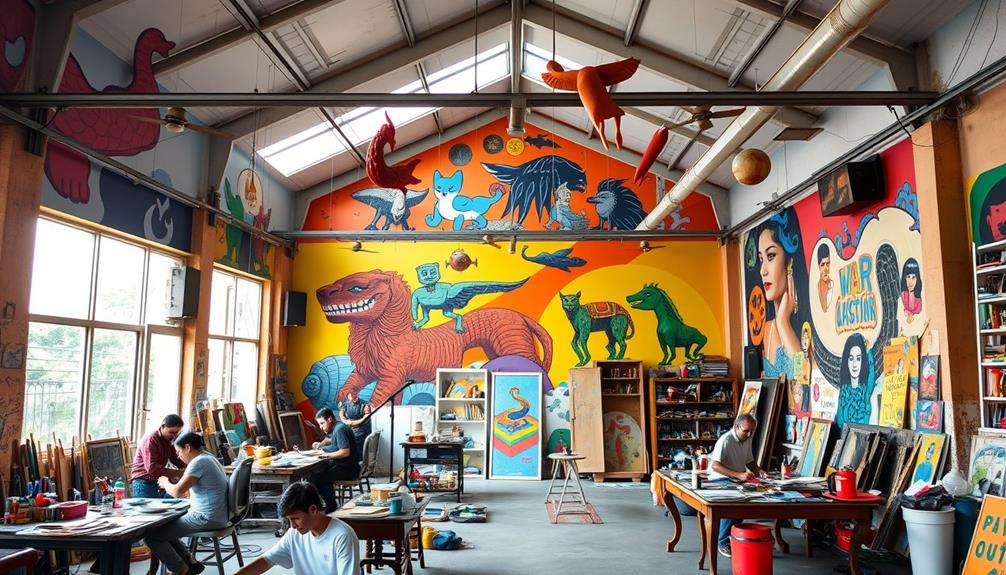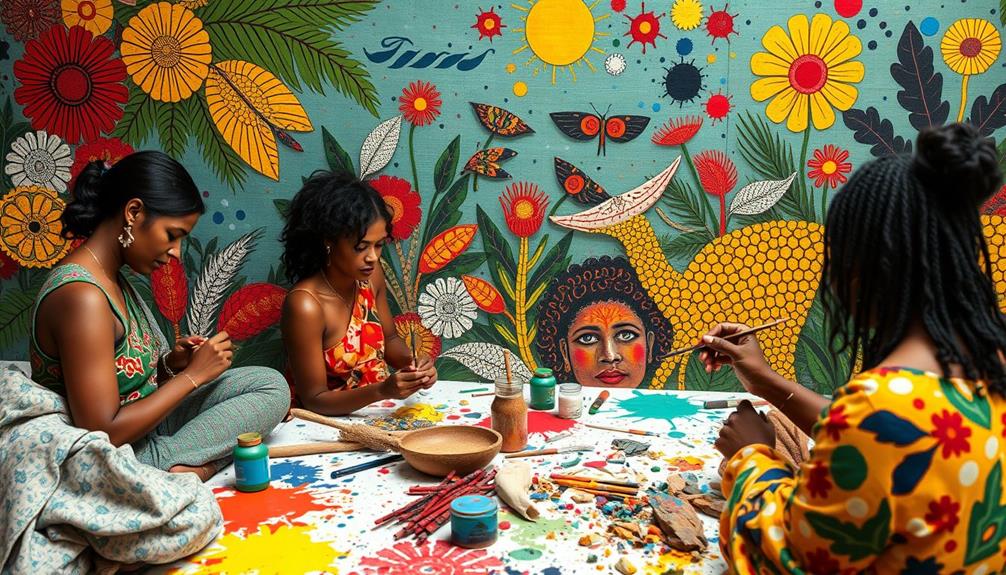Struthers Watchmakers stand as a tribute to preserving centuries-old traditions in watchmaking. By fusing modern technology with traditional craftsmanship, they create bespoke watches with vintage movements, intertwining Swiss expertise with age-old techniques. Through collaborations, they champion British watchmaking excellence, ensuring each watch is a masterpiece of creativity. Struthers upholds heritage by showcasing techniques like hand-guilloché engraving, blending old-world artistry with innovation. Their meticulous design process and attention to detail redefine tradition, offering unique timepieces that honor the past while embracing the future. Their dedication to artistry and preservation sets them apart in the world of horology.
Key Takeaways
- Struthers preserves watchmaking heritage through vintage movements.
- Collaborates with experts to merge traditional techniques with modern advancements.
- Focuses on meticulous design to ensure each timepiece embodies tradition.
- Upholds artistic traditions like hand-guilloché engraving and marquetry.
- Showcases commitment to keeping timeless traditions alive in bespoke watches.
Struthers' Innovative Approach to Watchmaking
Rebecca Struthers showcases her innovative approach to watchmaking by blending modern technology with traditional craftsmanship in her designs. Emphasizing the importance of traditional watchmaking techniques, Struthers integrates these age-old practices with modern advancements to create timepieces that are both timeless and cutting-edge. By combining traditional craftsmanship with modern technology, she brings a unique and invigorating perspective to the world of watchmaking.
Struthers' dedication to preserving traditional craftsmanship is evident in her use of vintage and antique movements in her bespoke watches. This distinctive approach not only honors the heritage of watchmaking but also adds a sense of history and character to each piece. Collaborating with experts in various disciplines further enhances the quality and craftsmanship of her designs, ensuring that every watch is a true work of art.
In a world where technology often overshadows tradition, Struthers' ability to seamlessly blend the two showcases her commitment to keeping centuries-old traditions alive in a modern context.
Blending Modern Tech With Tradition
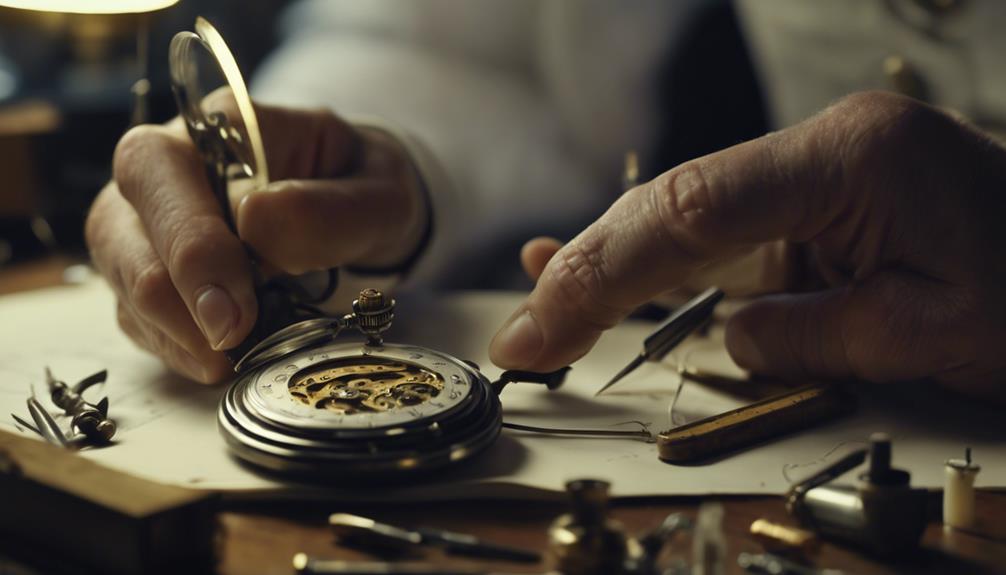
The integration of modern technology with traditional craftsmanship defines the essence of Struthers Watchmaking's approach to creating timepieces. By combining techniques such as computer-aided design (CAD) and rapid prototyping with age-old watchmaking traditions, Struthers achieves a unique blend of classic artisanship and contemporary innovation. This harmonious fusion allows for the restoration and customization of vintage and antique movements, giving rise to bespoke watches that encapsulate both history and modernity.
Through collaborations with experts in diverse fields, Struthers enhances its design process, ensuring that each timepiece is a masterpiece of aesthetics and precision. Clients are offered the opportunity to select movements from specific historical periods, further personalizing their bespoke watches with a touch of the past.
Struthers' commitment to an aesthetics-led design approach underscores their dedication to preserving watchmaking traditions while embracing the advancements of modern technology.
Bespoke Watches With Vintage Movements
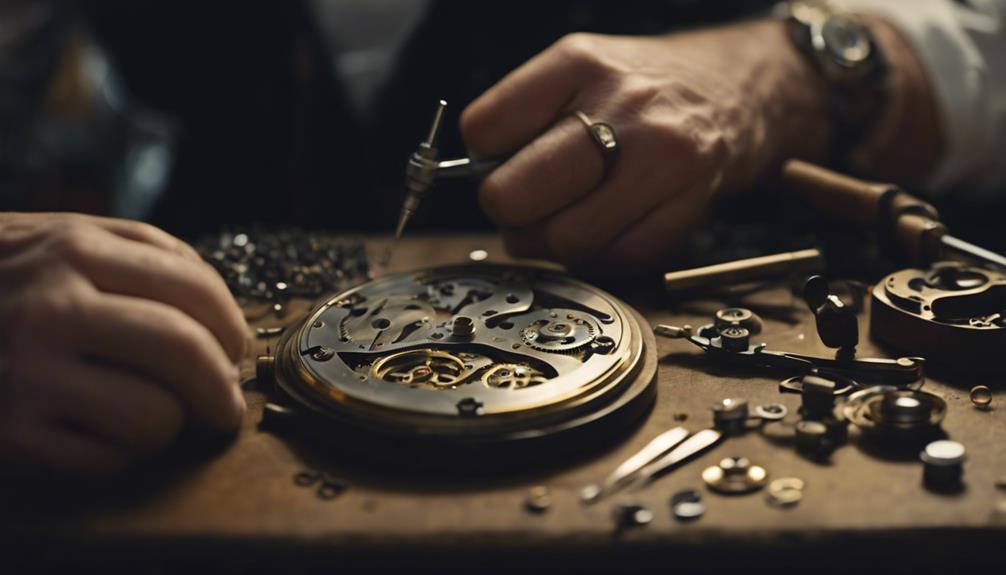
Struthers Watchmaking specializes in crafting bespoke watches that feature vintage movements, adding a touch of history and uniqueness to each timepiece. By incorporating Swiss watchmaking expertise and traditional techniques, Struthers offers clients the opportunity to own a truly one-of-a-kind watch. These bespoke watches not only showcase the artistry of traditional craftsmanship but also allow customers to choose movements from specific historical periods, infusing their timepieces with a sense of heritage.
The design process at Struthers is meticulous, focusing on the external aesthetics and individuality of each watch. Through a harmonious blend of vintage movements and modern design principles, Struthers ensures that every bespoke watch tells a story of the past while embracing contemporary innovation. By preserving the best of traditional watchmaking practices and combining them with modern CAD and prototyping methods, Struthers Watchmaking continues to redefine bespoke watchmaking excellence.
Collaborating for British Watchmaking Excellence
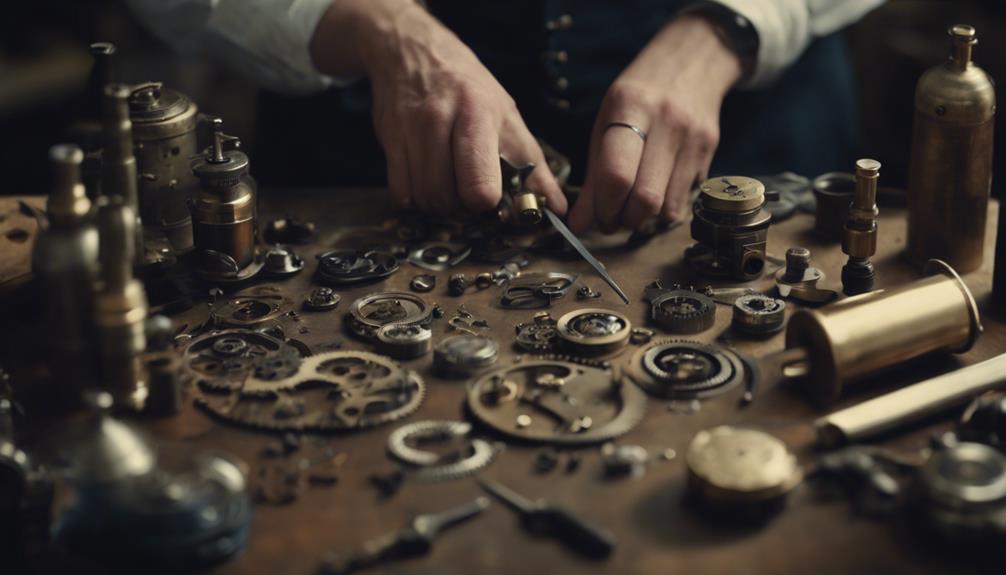
Collaborating with experts in various fields, Struthers Watchmaking champions British watchmaking excellence through unique and personalized timepiece creations. Embracing the essence of the British watchmaking tradition, Struthers values collaboration as a cornerstone of their design philosophy. By working closely with experts in watchmaking and jewelry, they fuse traditional craftsmanship with modern technology, resulting in exquisite timepieces that showcase the best of both worlds. This commitment to collaboration not only honors the heritage of British watchmaking but also guarantees that each watch is a true masterpiece of combined expertise and creativity.
To illustrate the significance of collaboration in British watchmaking excellence, below is a table showcasing the key partners that Struthers Watchmaking collaborates with:
| Field | Expertise | Contribution |
|---|---|---|
| Watchmaking | Traditional craftsmanship | Preserving time-honored techniques and knowledge for authentic timepieces |
| Jewelry | Artistic design | Enhancing aesthetics and beauty of watch designs with intricate details |
| Technology | Modern innovation | Incorporating cutting-edge technology to improve performance and functionality |
Preserving Timeless Traditions in Timepieces
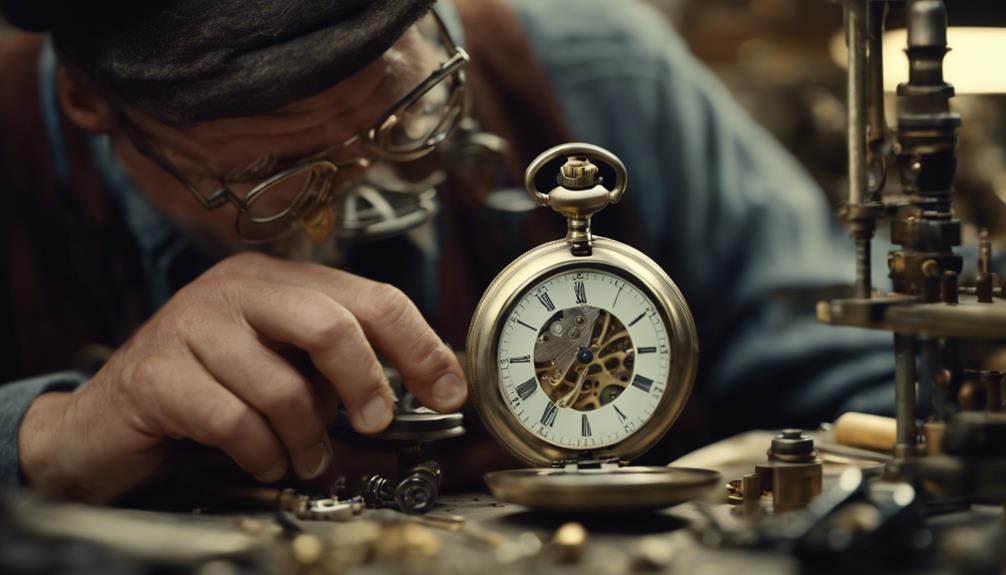
Preserving timeless traditions in timepieces involves upholding the heritage of watchmaking through meticulous craftsmanship. Techniques like hand-guilloché engraving, gemsetting, marquetry, engraving on watch cases, and enamelling aren't just artisanal skills but a reflection of centuries-old expertise.
These traditions guarantee that each timepiece isn't just a functional accessory but a piece of art that embodies the essence of traditional watchmaking.
Craftsmanship in Timepieces
Craftsmanship in timepieces plays an essential role in upholding centuries-old traditions within the watchmaking industry.
The artistry involved in creating mechanical watches and fine watchmaking pieces is a validation of the dedication of preserving tradition alive.
Traditional artisanal skills like hand-guilloché engraving, gemsetting, and marquetry are vital in crafting exquisite timepieces that stand the test of time.
Techniques such as enameling, including cloisonné and champlevé, not only enhance the beauty of watch dials but also secure their durability.
Hand-engraving, meticulously done under a binocular microscope, adds a level of detail and uniqueness that elevates timepieces to a whole new level of artistry.
Moreover, collaborations with experts in various disciplines enrich the craftsmanship and design process, pushing the boundaries of innovation while still honoring the heritage and timeless traditions that have been passed down through generations in the world of watchmaking.
Heritage of Watchmaking
The heritage of watchmaking stands as a tribute to the enduring legacy of centuries-old traditions in the art of crafting timepieces.
Traditional watchmaking encompasses practices passed down through generations, ensuring the preservation of artisanal skills vital for maintaining timeless traditions in timepiece craftsmanship.
Techniques such as hand-engraving, guilloché, and enameling play a significant role in honoring the rich heritage of watchmaking, showcasing the intricate artistry involved in creating these exquisite pieces.
Artisanal skills like marquetry, gemsetting, and enamel work further reflect the historical craftsmanship embedded in traditional watchmaking, highlighting the meticulous attention to detail required in each step of the process.
Companies like Patek Philippe are renowned for their commitment to heritage preservation, exemplifying how traditional watchmaking values are upheld through the meticulous craftsmanship evident in their exceptional timepieces.
Honoring Artistry in Contemporary Context
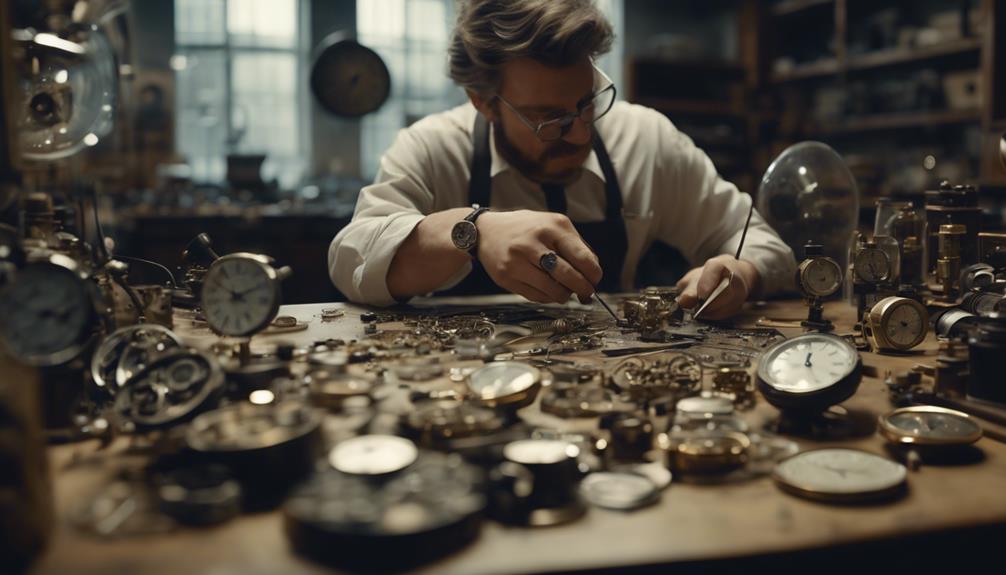
Struthers Watchmaking stands as a prime example of honoring artistry in a contemporary context.
By blending traditional craftsmanship with modern design elements, they showcase a seamless fusion of artistic heritage preservation and innovative interpretations of craftsmanship.
Through their unique approach, they not only pay homage to centuries-old traditions but also propel the art of watchmaking forward into the modern era.
Artistic Heritage Preservation
Preserving centuries-old artistic traditions, the watchmaker continues to honor and showcase exceptional artistry in a modern context. Patek Philippe, renowned for its exquisite watchmaking, embraces artisanal craftsmanship through techniques like marquetry, where intricate woodcutting adorns watch dials with landscapes and silhouettes.
Their gemsetting involves meticulously arranging precious stones by hand, creating vibrant displays on their timepieces. Traditional artistry is revived through hand-guilloché engraving, with intricate patterns gracing the dials, movements, and cases of Patek Philippe watches.
Additionally, enamelling techniques such as cloisonné and champlevé are expertly employed by artisans to enhance the beauty and durability of watch dials and cases. The delicate hand-engraving, performed under a binocular microscope, showcases the watchmaker's dedication to preserving heritage with precision and mastery.
Modern Interpretations of Craftsmanship
Honoring artistry in a contemporary context, modern interpretations of craftsmanship in watchmaking showcase innovative designs and unconventional approaches that push the boundaries of traditional norms.
Within the Swiss watch industry, independent watchmakers like MB&F, LDuchen, Corum, and Cyrus are redefining the essence of mechanical watches.
MB&F's intergalactic weather station watch, The Fifth Element, exemplifies a fusion of art and horology, challenging conventional design with its avant-garde aesthetic.
LDuchen transforms watch faces into intricate canvases, elevating timepieces into unique artworks.
Corum's cigar-smoking clown watch disrupts traditional norms with its whimsical and unconventional design, appealing to collectors seeking originality.
Cyrus ventures into uncharted territory by incorporating unconventional shapes and intricate mechanical complications, offering a contemporary take on traditional watchmaking.
The Klepcys Vertical Tourbillon by Cyrus further underscores this innovative spirit, dividing time uniquely and blending innovation with heritage, symbolizing the evolving landscape of craftsmanship in the modern watchmaking world.
Struthers' Design Process and Influences
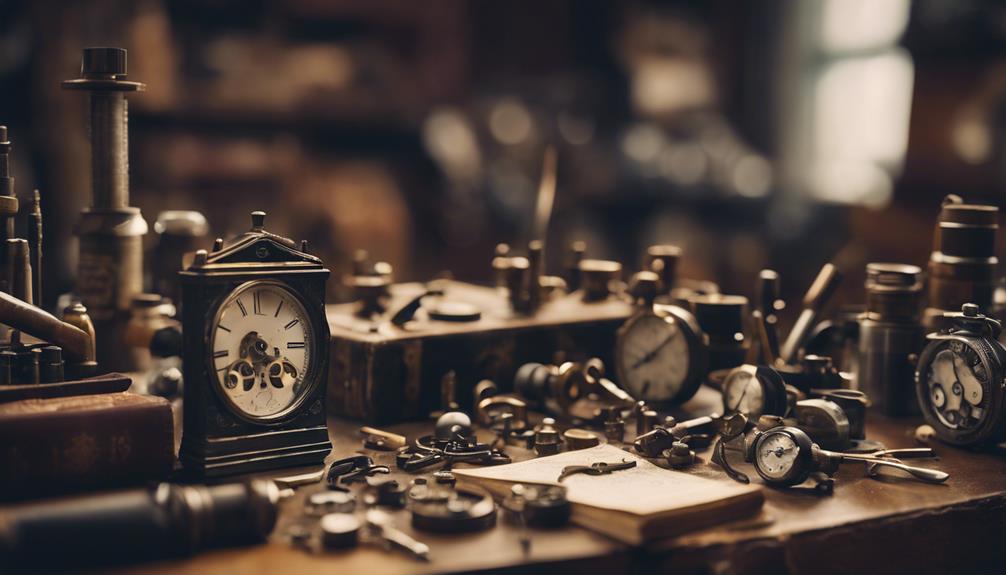
With an aesthetics-led approach, the design process at Struthers focuses on the external appearance of their bespoke watches. This process involves a meticulous integration of customer needs and concepts into the creation of unique timepieces that blend modern technology with traditional craftsmanship.
Struthers collaborates with experts from various disciplines, including watchmaking and jewelry, to guarantee that every aspect of the design aligns with their philosophy of combining old-world techniques with contemporary advancements.
One notable aspect of Struthers' design process is the utilization of vintage and antique movements in their bespoke watches. This approach not only adds a touch of history and uniqueness to each timepiece but also showcases the brand's dedication to preserving traditional craftsmanship in the art of watchmaking.
Integration of Old-World Techniques With Advancements
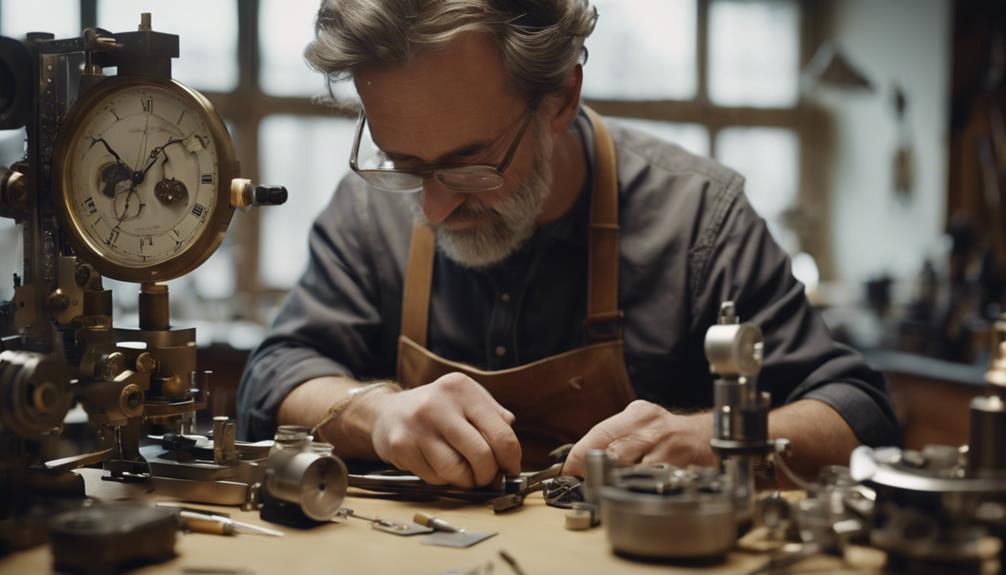
Struthers Watchmaking seamlessly integrates age-old techniques with cutting-edge advancements in their innovative approach to crafting bespoke timepieces. By combining traditional craftsmanship with modern technology, Struthers achieves a harmonious blend that sets them apart in the world of watchmaking. Their design process exemplifies this integration, as they utilize CAD and rapid prototyping alongside traditional methods to bring their unique timepieces to life. One striking aspect of their work is the restoration and incorporation of vintage and antique movements, demonstrating a fusion of old-world charm with contemporary elements. Clients even have the opportunity to choose movements from specific historical periods, showcasing the depth of integration present in Struthers' creations.
| Old-World Techniques | Advancements in Technology | Unique Features |
|---|---|---|
| Traditional craftsmanship | CAD and rapid prototyping | Restoration of vintage movements |
| Integration with modern elements | Utilization of modern machinery | Client selection of historical movements |
| Preservation of heritage techniques | Innovative material use | Customizable design options |
| Attention to detail in hand-finishing | Precision engineering | Bespoke complications |
Ensuring Tradition Through Unique Timepieces
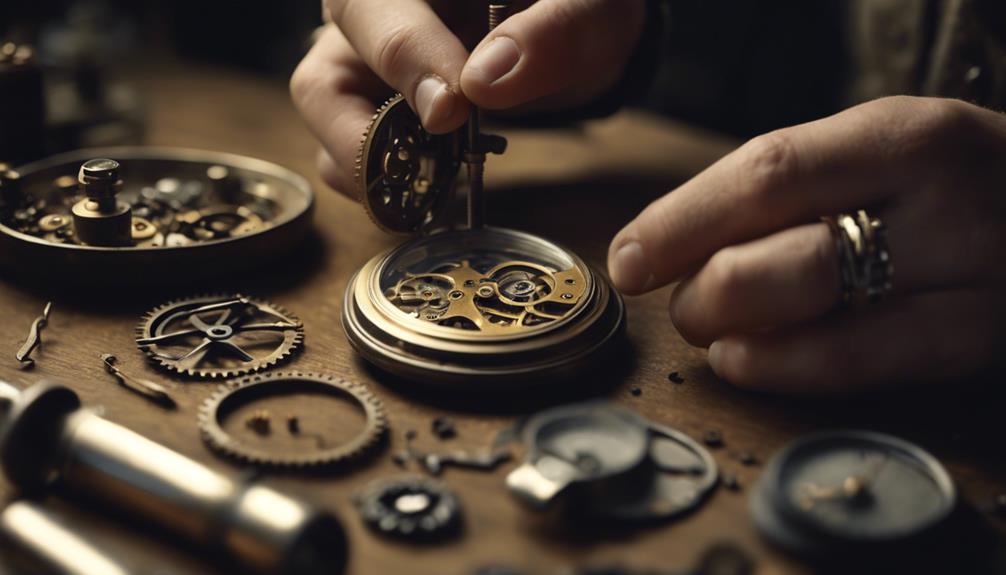
Incorporating unconventional designs and innovative features, watchmakers are redefining tradition through their creation of unique timepieces. These timepieces challenge conventional norms and push the boundaries of traditional watchmaking. For example, Patek Philippes, known for their exquisite craftsmanship, have embraced new manufacturing methods to safeguard their legacy remains intact while adapting to modern trends. By combining traditional techniques with contemporary aesthetics, Patek Philippes continues to uphold the essence of watchmaking tradition.
Master watchmakers play an essential role in ensuring that tradition is preserved through the creation of these unique timepieces. Their expertise and dedication to the craft allow for the integration of old-world techniques with innovative designs, resulting in timepieces that are both timeless and cutting-edge. The meticulous attention to detail and precision exhibited by master watchmakers like those at Patek Philippes further solidifies the importance of tradition in the ever-evolving landscape of watchmaking. Through their artistry, these watchmakers make sure that tradition endures in the form of exceptional and distinctive timepieces.
Frequently Asked Questions
How Did Old Watches Keep Time?
Old watches kept time through intricate mechanical movements powered by a mainspring and regulated by escapements like the balance wheel and hairspring. Accuracy was achieved by adjusting the balance wheel's rate through the tension in the hairspring, fine-tuning the watch's timekeeping capabilities.
Traditional watches featured manual winding mechanisms to maintain the mainspring's tension for continuous operation. The gear train efficiently transmitted power from the mainspring to the escapement, ensuring precise timekeeping.
Who Is the Greatest Watchmaker Alive?
Philippe Dufour is widely considered the greatest watchmaker alive, renowned for his exceptional craftsmanship and dedication to traditional watchmaking.
His Grande Sonnerie pocket watch, with over 1,000 meticulously handcrafted components, showcases his mastery in horology.
Dufour's Simplicity series, known for its elegant and understated designs, exemplifies his commitment to traditional techniques.
Collectors and enthusiasts highly value his watches, such as the sought-after Duality model, for their exquisite craftsmanship and limited production.
What Were Watches Originally Used For?
Watches were originally used as portable timekeeping devices in the 15th century, evolving from sundials and hourglasses. They evolved from functional timepieces to symbols of craftsmanship, luxury, and personal style.
The first wearable watches were introduced in the 16th century, with early models being worn as pendants or attached to clothing. Pocket watches became popular in the 17th century, and the first wristwatches were designed for military use in the late 19th century.
Who Is the Best Watchmaker of All Time?
Abraham-Louis Breguet is widely hailed as one of the best watchmakers of all time due to his groundbreaking inventions like the tourbillon. His innovative contributions include the first wristwatch, self-winding mechanism, and gong-spring for repeater watches.
Breguet's clientele included notable figures like Napoleon Bonaparte and Queen Marie Antoinette, solidifying his reputation. The enduring legacy of Breguet's craftsmanship is evident in the exceptional timepieces still produced by the Breguet company today.
Conclusion
To sum up, Struthers' commitment to preserving centuries-old watchmaking traditions while incorporating modern technology showcases a unique blend of craftsmanship and innovation.
By collaborating with experts and utilizing vintage movements, they continue to create bespoke timepieces that honor the artistry of the past in a contemporary context.
Through their meticulous design process and integration of old-world techniques, Struthers guarantees that tradition lives on in each unique watch they produce.



